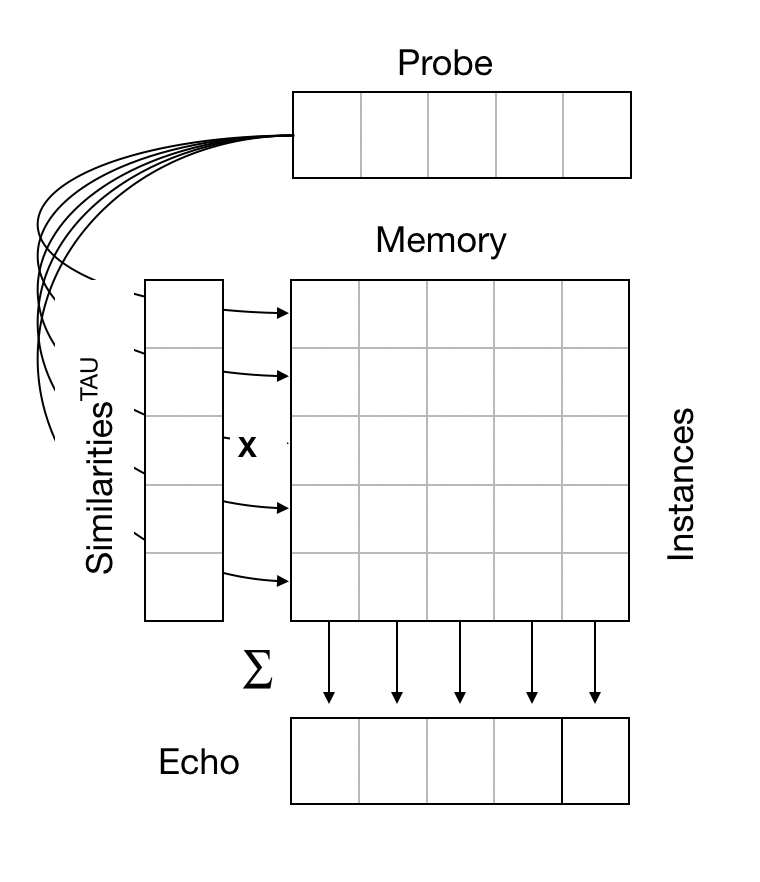PSYC 2530: Instance theory and Minerva II
Matthew J. C. Crump
Last compiled 11/08/23
Overview
- A poetic process theory
- Principles of instance theory
- Implementing the principles computationally
- Examining the model
Jamieson et al. (2022)
The reading for this module is:
Jamieson, R. K., Johns, B. T., Vokey, J. R., & Jones, M. N. (2022). Instance theory as a domain-general framework for cognitive psychology. Nature Reviews Psychology. https://doi.org/10/gpd7zt
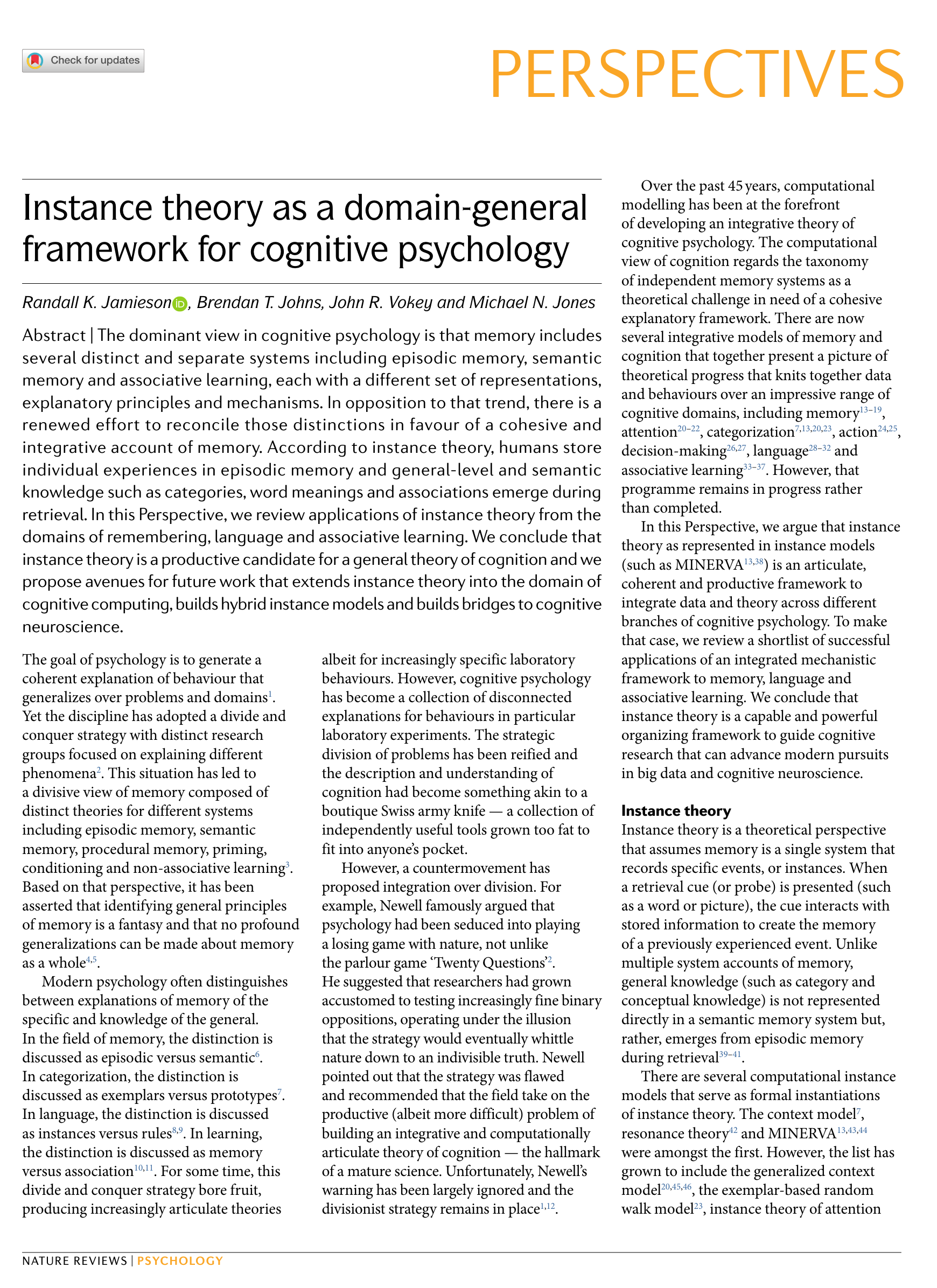
Intuition pump
Intuition pumps allow thinkers to use their intuition to develop an answer to a problem. - Wikipedia, Dennett
- Instance theory is a productive intuition pump for cognition
- Need ways to develop and formalize the intuitions
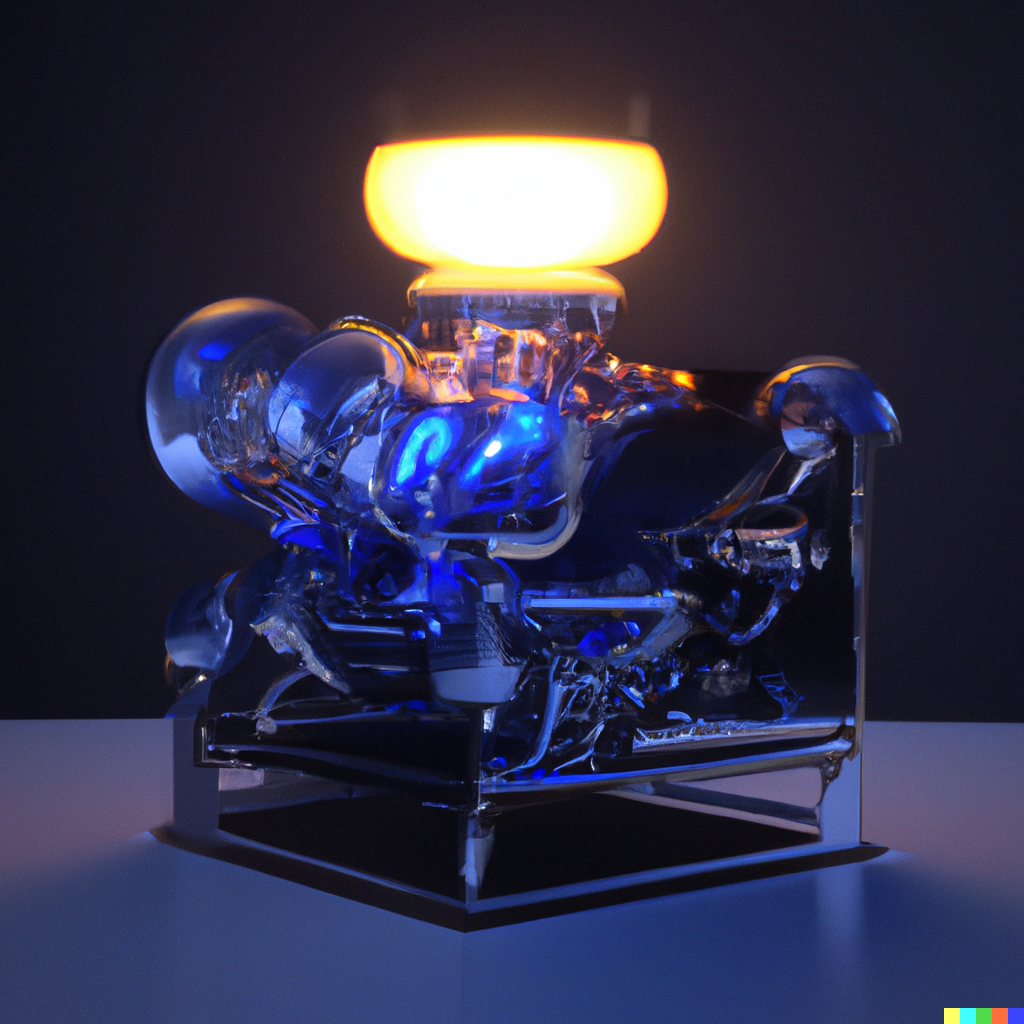
How does some cognitive ability work?
Domain general explanations
- emergence from general-purpose perception, attention, learning, and memory processes
- Externally informed through experience with a structured environment
Special system explanations
- special module with unique processing algorithms
- Internally pre-structured to sense and use signals
What is instance theory?
- A collection of domain-general processing assumptions about how memory functions
- Can be formalized computationally
- Provides a theoretical basis to evaluate potential functional abilities (and limitations) of episodic memory systems
- Can be explanatory and exploratory
Mnemic Psychology
Historical Sidenote
- Modern instance theory is broadly consistent with Richard Semon’s theory of memory developed in Mnemic Psychology (1923)
- Semon was a German theorist whose ideas were largely forgotten until they were translated to English (mid-century)
- See Schacter, D. L., Eich, J. E., & Tulving, E. (1978). Richard Semon’s theory of memory. Journal of Verbal Learning and Verbal Behavior, 17(6), 721-743.
- Semon’s ideas inspired Hintzman’s MINERVA 2
Poetic Psychology
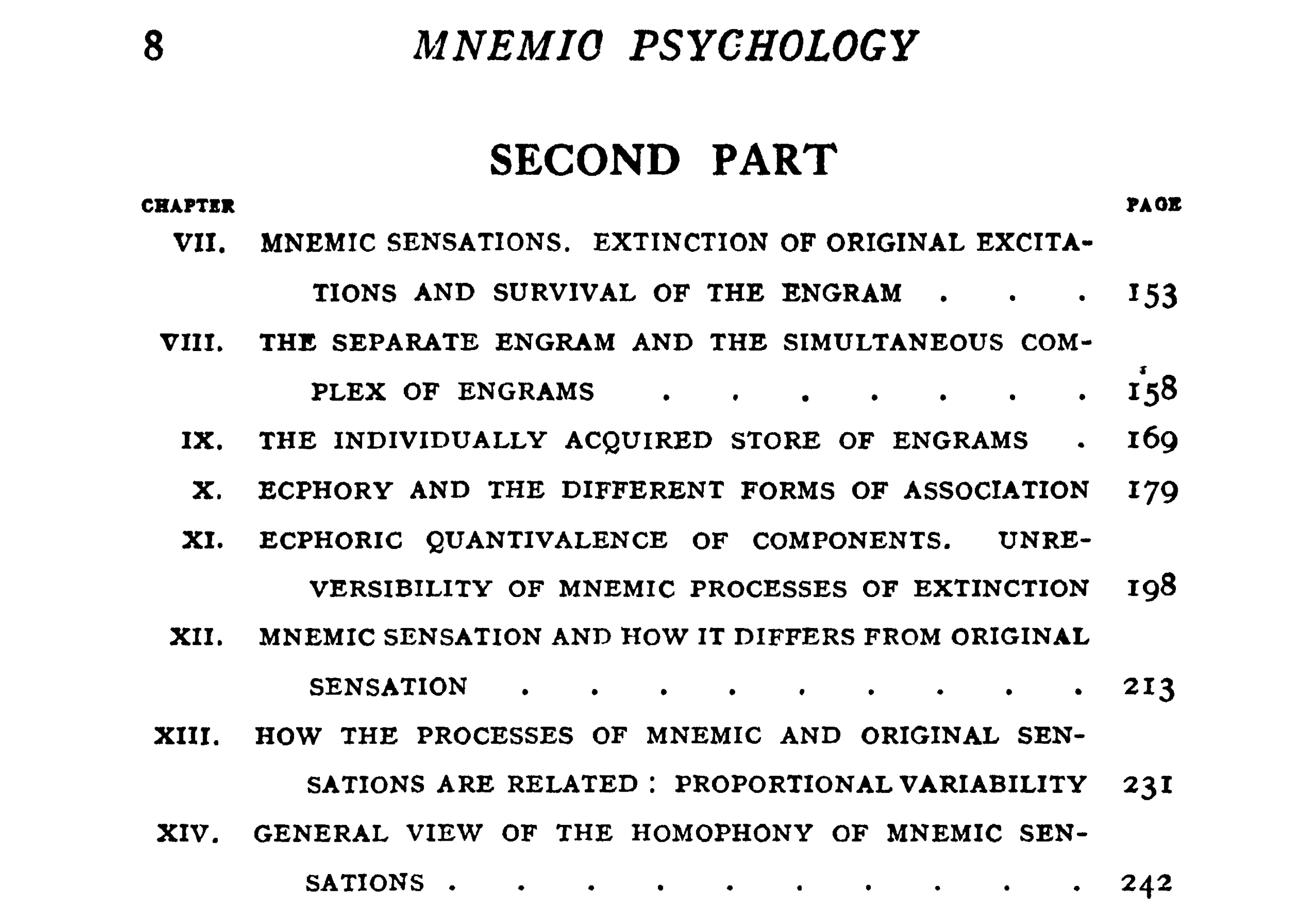
Engram-complex

Physical Resonance
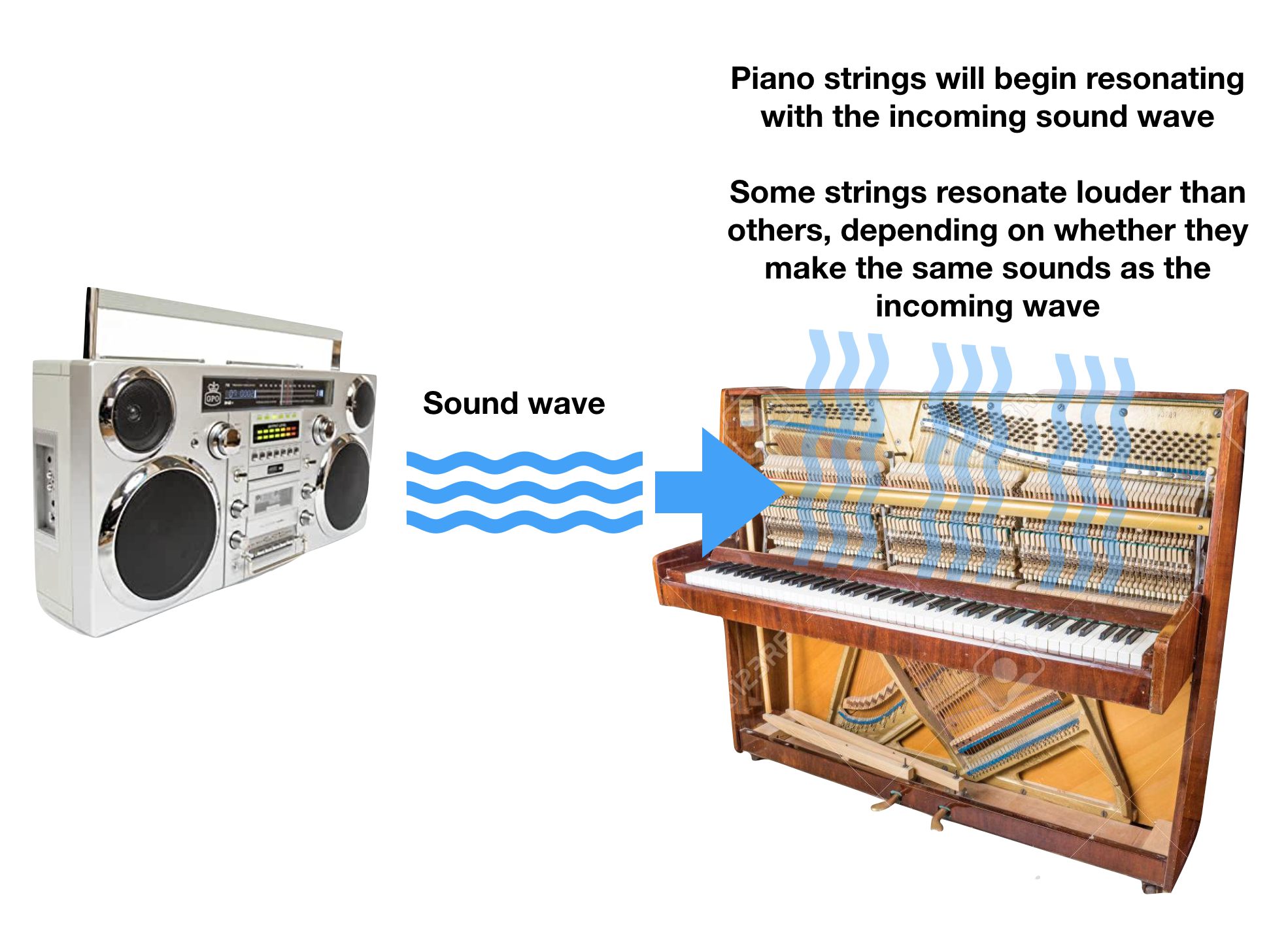
Memory as experiential resonance
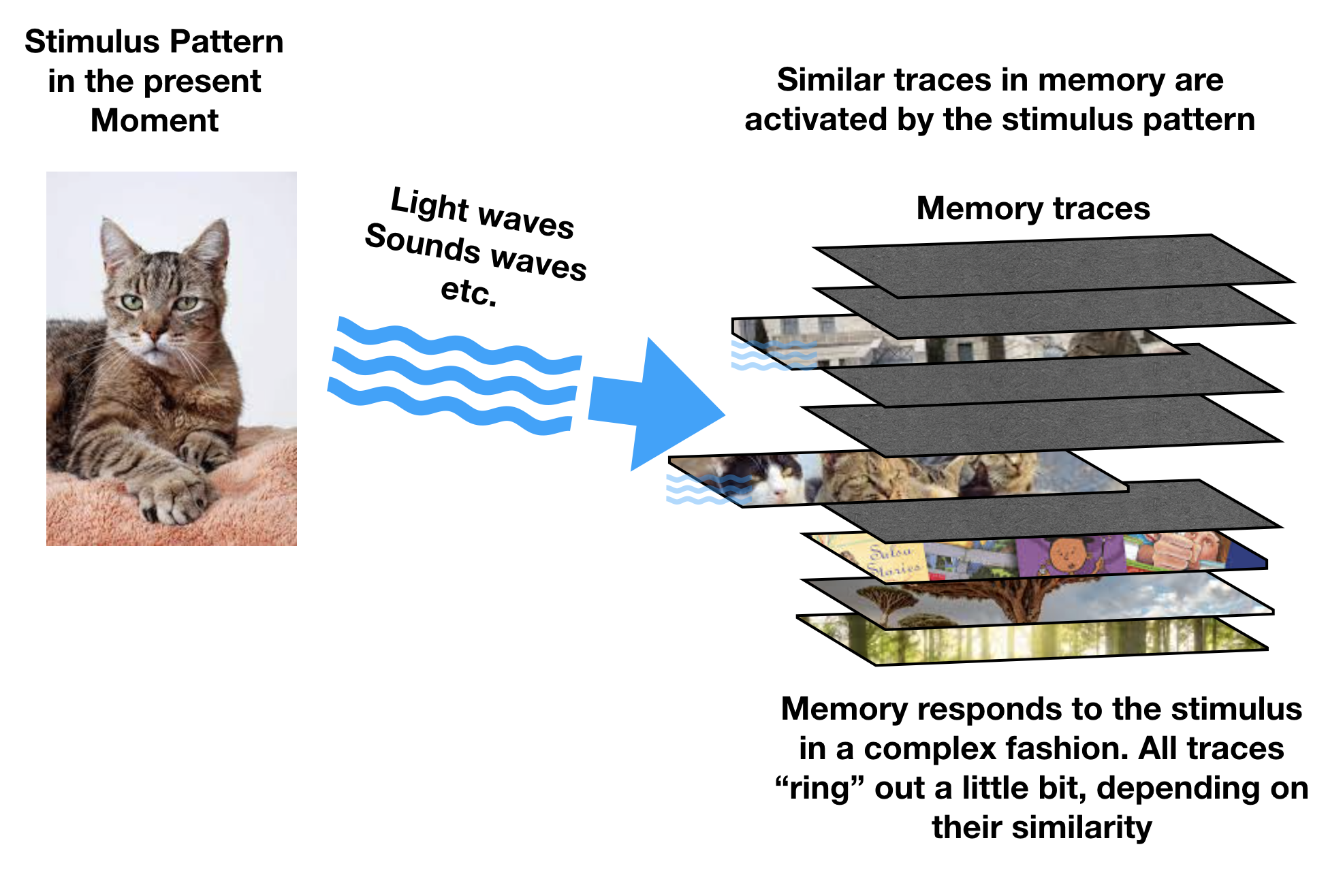
Basic instance theory assumptions
- People encode the details of individual experiences
- Retrieval is similarity driven.
- the pattern in the present moment retrieves experiences with similar patterns from the past
Instance theory primers
- A collection of related process theories of memory and cognition
- Different researchers have different versions (broadly similar)
- Instance theories range in specificity from verbal theories to computational models
Example verbal instance theories
Jacoby, L. L., & Brooks, L. R. (1984). Nonanalytic cognition: Memory, perception, and concept learning. The Psychology of Learning and Motivation, 18, 1–47.
Kolers, P. A., & Roediger, H. L. (1984). Procedures of mind. Journal of Verbal Learning and Verbal Behavior, 23(4), 425–449.
Big picture idea
- Lots of cognitive abilities may be understood in terms of processes involved in cued-recall.
Minerva 2
MINERVA 2 is a global-matching model of memory (Hintzman, 1984,86,88) that can be formally evaluated as a computer algorithm
applied across numerous domains
Frequency judgments (Hintzman, 1988)
False Memory (Arndt, 1998)
Selective memory deficits (Curtis & Jamieson, 2019)
Age-related memory decline (DRYAD, Benjamin, 2012)
Prototype abstraction (Hintzman, 1986)
Minerva 2 continued
- Artificial Grammar Learning (Jamieson & Mewhort, 2009)
- Implicit Sequence Learning (Jamieson & Mewhort, 2009b)
- Judgments of Likelihoods (Dougherty, 1999)
- Eyewitness identification (Clark, 2003)
- lexical access (Goldinger, 1998)
- Associative Learning (MINERVA-AL, Jamieson et al., 2010)
- Semantic memory (ITS, Jamieson et al, 2018)
Hintzman (1986)
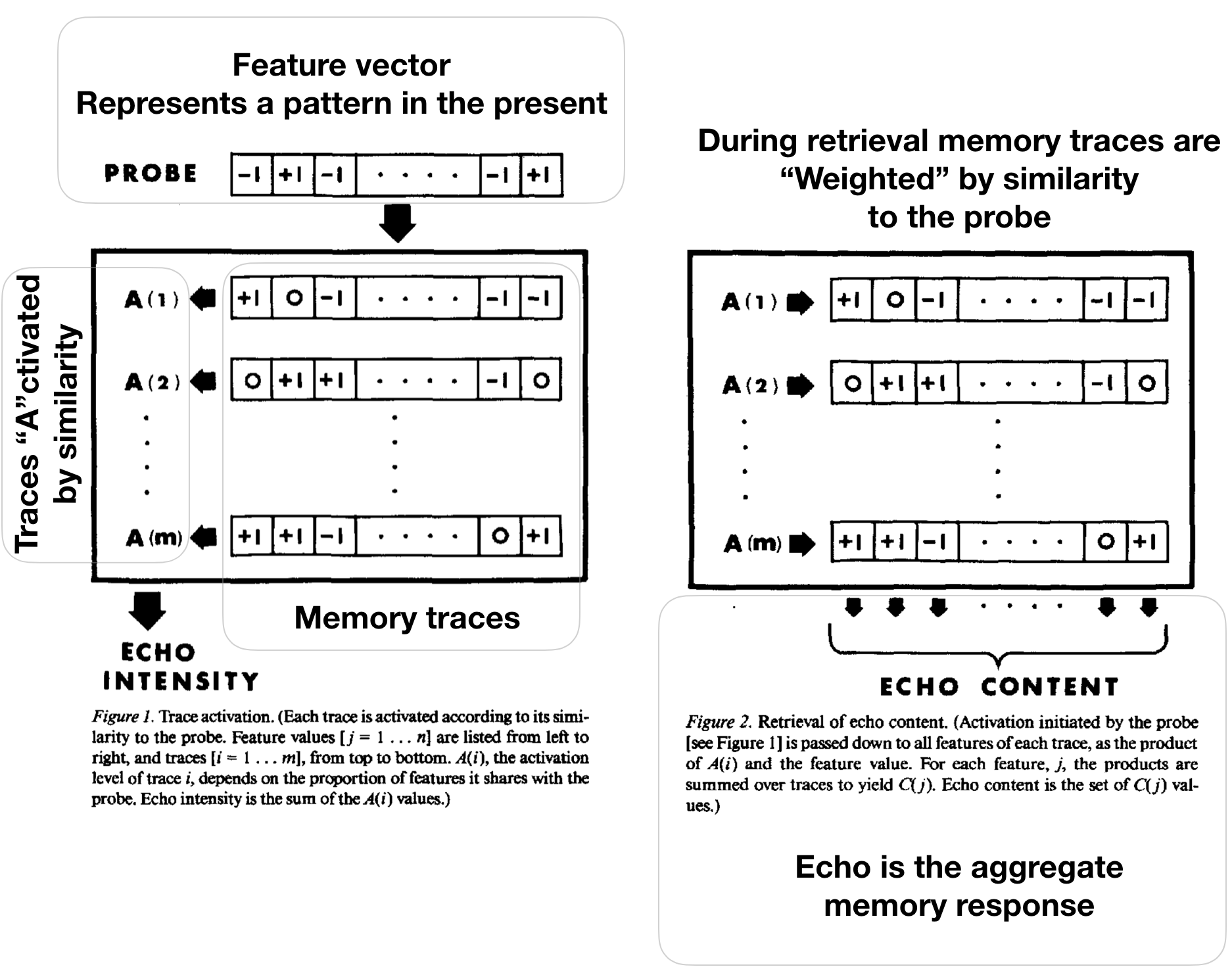
MINERVA in Excel
Let’s look at how the model works
- Feature vectors
- Encoding
- Retrieval
- Recognition judgments
- Frequency judgments
- Schema abstraction
